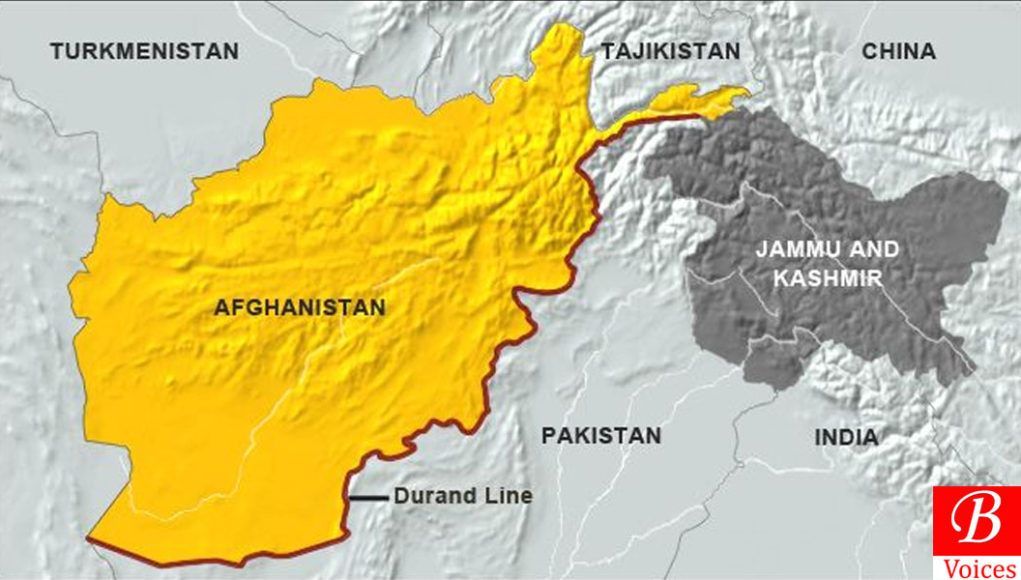Younas Achakzai
Culture refers to a system of shared beliefs and meanings that we learn growing up in a particular society. Culture is something that everyone in a society experiences. But culture does not necessarily mean that everyone has the same beliefs. While many aspects of culture bring people together in a society, culture can also have very divisive elements. When we talk about a cultural divide, we mean the factors that create rifts in our society and can make it more difficult for people to live happily together. When culture is unified then it is difficult to rift it by an entity called Fence, which the government has placed at the Durand line.
The Durand Line is the 2,640-kilometer (1,640-mile) border between Afghanistan and Pakistan. It’s the result of an agreement between Sir Mortimer Durand, a secretary of the British Indian government, and Abdur Rahman Khan, the emir or ruler of Afghanistan. The agreement was signed on November 12, 1893, in Kabul, Afghanistan. The Durand Line has served as the official border between the two nations for more than one hundred years, but it has caused controversy for the people who live there.
When the Durand Line was created in 1893, Pakistan was still a part of India. India was in turn controlled by the United Kingdom. The United Kingdom ruled India from 1858 until India’s independence in 1947. Pakistan also became an independent nation in 1947. The British established the Durand Line after conquering the Pashtuns. Eighty-five percent of the Durand Line follows rivers and other physical features, not ethnic boundaries. It split the Pashtuns into two separate countries. Afghanistan governs all the Pashtuns on one side of the Durand Line, while Pakistan governs all the Pashtuns on the other. The Pashtuns on the Pakistan side of the border made up more than half of the Pashtun population.
Throughout history, colonial forces like the British have set boundaries that cause great tension for people who lived in the colony. Because the officials who drew the Durand Line didn’t consider the ethnic groups that lived in the region, today there are many battles along the border between Afghanistan and Pakistan. In Pakistan, 45 million Pashtuns are living in the region and about 35 million Pashtuns are living in Afghanistan.
Right now, the Durand Line passes through the Pakistani provinces of Khyber Pakhtunkhwa Province, Federally Administered Tribal Areas, and province Balochistan. It also includes 10 provinces in Afghanistan on the Afghan side.
Relations between Pakistan and Afghanistan have historically been tense. Cross-border infiltration, refugees, drug trafficking, militant groups, and disputes over counterterrorism policy and dialogue with terrorist networks have contributed to an entrenched trust deficit and have eroded relations. These issues have impacts beyond the security sector, complicating efforts to build stronger trade and economic ties. The daily increasing disputes were a shocking matter for both of the governments which resulted in the closure of friendship gates for months and billions of decline in the trade between Pakistan and Afghanistan. The main reason for these heart felling issues was poor border management.
In the Nawaz regime, the Pakistani military leadership took steps and started fencing between the two neighboring countries. It is true the fence at the Durand line reduces smuggling, human trafficking, drug trafficking, and counter-terrorism, but it also victimized the business community on both sides, resulted in a decline in Pakistan’s share in transit trade, Iran’s share has steadily increased. India, Iran, and Afghanistan have finalized a draft for a new transit trade agreement, the planned land route will run from Iran’s Chabahar port, in the Gulf of Oman, connecting Afghanistan to the Persian Gulf and allowing the movement of goods from South Asia into Afghanistan and Central Asia. In short, it is proved as a dilemma for the business community.
The remedy to this huge economic turn out is proper border management and ease of business at Pakistan Afghanistan border. To relieve the business group from this dilemma, a few days back, Speaker of National Assembly, Mr. Asad Qaiser sent a delegation to Chaman, consisting of, the Secretary to Prime Minister, Mr. Arbab Shehzad, and special advisor for Afghanistan Mr. Sadiq, Chief Collector, and other concern officials with the MNA Mr. Molana Salahudin.
The Delegation was received from the helicopter by the President of Chaman Chamber of Commerce, Mr. Achakzai, and Ex. Senior Vice President Mr. Shafiq Khan Achakzai along with the Commandant of Frontier corps in FC Killa Chaman. A detailed briefing was given to the delegation by the two representatives of the Chamber of Commerce, Commandant Frontier Corps, Custom officials. In Chaman Chamber of Commerce, the secretary to PM showed his great concerns regarding the downfall in trade between Pakistan and Afghanistan. Laterally the delegation went to Quetta and met the Chief Minister and Chief Secretary of Balochistan and sure will report back to the related concerns.
In short, till now the fence is not that much fruitful for the business community as it should be. It was expected that after fencing, the increase in duty taxes, reduction in smuggling, and ease in doing business would be revealed. Unfortunately without proper business management, it is just a dream and desire for the business community and it has proved that the prosperity of a country can be determined by the prosperity of its business community.
The writer is an Advisor for Muhammad Shafiq and Brothers PVT LTD in Quetta.
Disclaimer: Views expressed in this article are those of the author and Balochistan Voices not necessarily agrees with them.
Share your comments!








